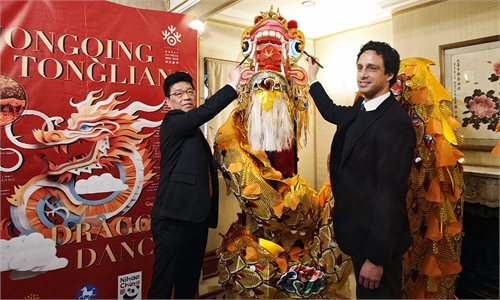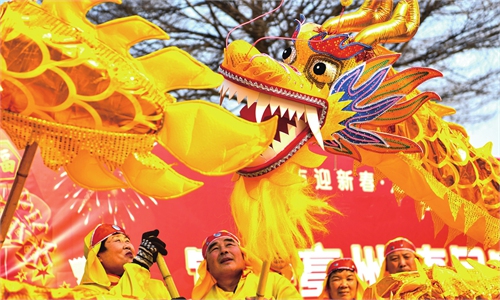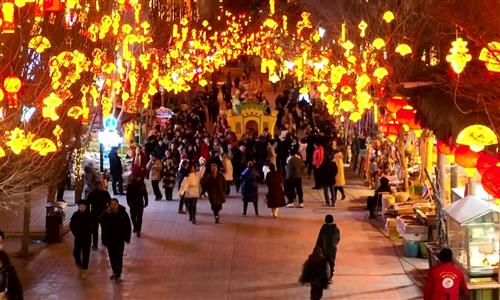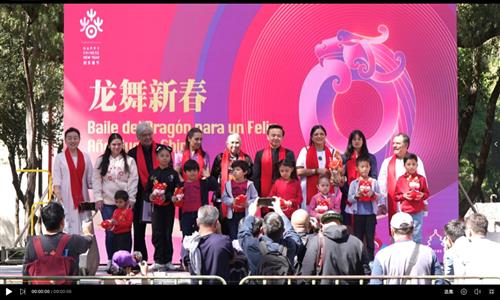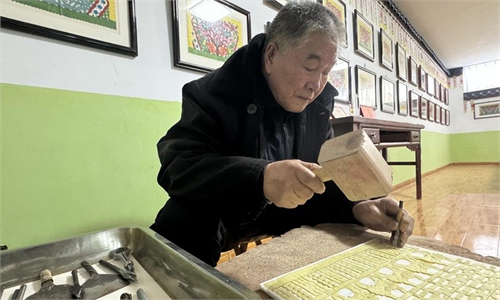ARTS / CULTURE & LEISURE
Temple fair makes sensational return in China, embodying people's vision for a happy and prosperous life
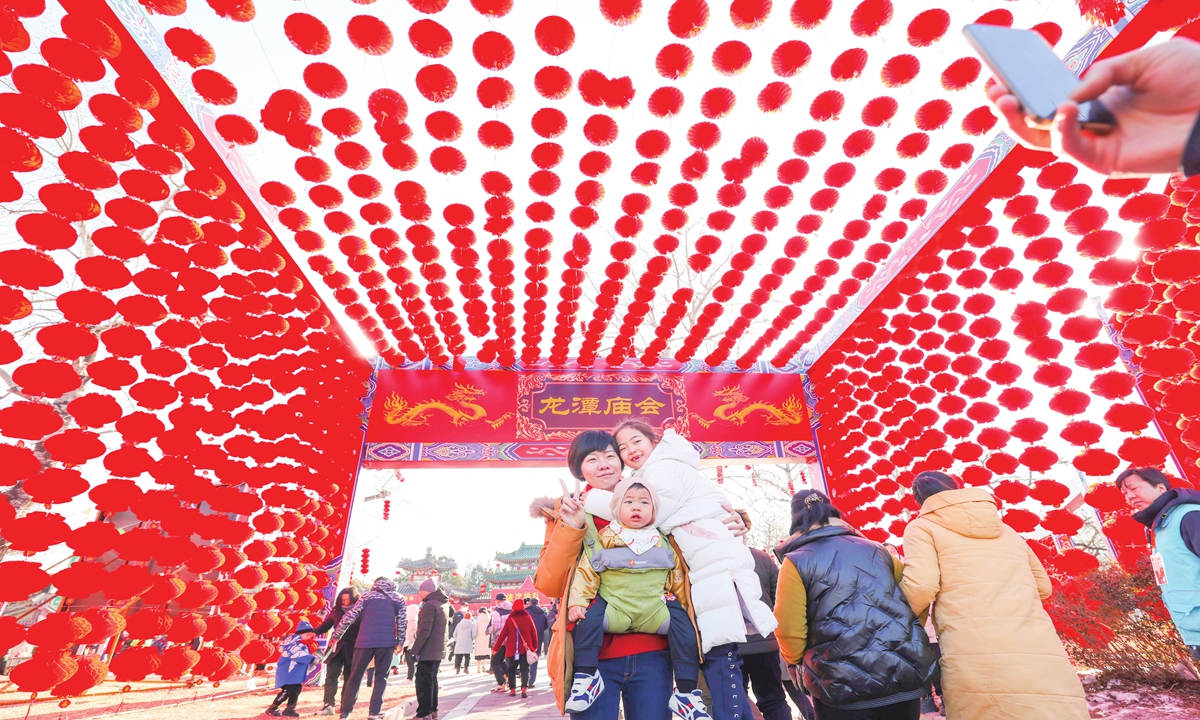
A family visits the Longtan temple fair on February 10, 2024 in Beijing. Photo: VCG
Before the Spring Festival holidays commenced, my friends and colleagues had made up their minds on how they would be spending their holidays. Some went on an overseas cruise ship trip to the Middle East, some planned to visit Singapore as both countries exercise reciprocal 30-day visa exemption, some would travel to various Chinese cities, and some would be making a much-awaited return to their hometown.
Due to various reasons, I chose to stay in Beijing. I expected this Spring Festival to be a bit boring, but to my delightful surprise, the holidays have been vibrant and joyous for me and my family.
A casual stroll down Beijing's streets and a cursory view of the city's cultural sites revealed a shower of light of red lanterns that symbolize good luck and auspiciousness, offering a strong festive ambiance.
Most shopping malls and restaurants remained open as always, and have seen an upswing in clientele numbers. Shopping malls came up with different themes and promotions to attract patrons, while servers at restaurants tended to diners with smiles on their faces.
Nostalgic adventure
What struck me most were the temple fairs - places to explore traditional performances, indulge in local treats, and soak up the festivities of the Spring Festival.
The temple fairs are a blend of traditional and modern cultures. The carnival-like event is not only where the people can go to rich their lives during the Spring Festival holidays, but also a means to continue and expand the Chinese cultures and traditions.
This year, temple fairs have also been held in different Chinese cities. In Liaoyang of Northeast China's Liaoning Province, the art of striking iron flowers originated in the Northern Song Dynasty won applauses from visitors; in Chengdu of Northwest China's Sichuan Province, modern stories were told via traditional flower lanterns... Various activities at the temple fairs reinvigorate the essence of culture.
Traditional temple fairs made a big return to Beijing during this year's holidays after being suspended for several years due to the pandemic. I decided to take my 6-year-old son to the Longtan temple fair, the closest to my home, for the first time.
The fair was a festive sight as families, young couples, and senior citizens made up the lively crowd in attendance. It was a healthy mix of in-land tourists from other cities and Beijing residents. At around 10 am on the first day of the temple fair, long, slow-moving queues snaked down the street from the venue's entrance. It was a welcome return to pre-pandemic numbers and all coordinated with great precision.
My little son, of course, was excited. Visiting the temple fair was an adventure for him. There were too many activities to enjoy and pieces of folk art to see, a mélange of candied haws and skewered snacks - the stuff of one's childhood dreams.
My son's joyful face reminded me of my childhood when I spent the Spring Festival at a temple fair with my parents in my hometown. For a moment, I was immersed in nostalgia only cut short by my son's rumbustious albeit well-intentioned antics that echoed the palpable excitement in the air.
Before going to the temple fair, I was hesitant, as I was already familiar with the rigmarole of such events. Such is the seemingly jaded nature of Beijing residents who may take for granted otherwise internationally recognized sites like Tiananmen Square. While there, however, my cynicism was overtaken by a new-found excitement as I became part of the citywide and even nationwide joy of the annual festival.
Before the COVID-19 epidemic, it's fair to say that many took such celebrations for granted. However, after the three or so years of uncertainty brought about by the spread of COVID-19, such vibrancy is all too welcome. Since the end of the pandemic, the vitality of both the city and the people has returned. I can feel the heartbeat of the capital, and I can feel people's desire for a happy and prosperous life -- and they need the Spring Festival, China's most spectacular traditional festival that delivers hope, as the catalyst.
'Rational' demand
As I viewed my friends' WeChat moments, which captured adventures far and wide, I equally appreciated this year's vibrant Spring Festival in Beijing. The vitality and mobility of the people are the driving forces of the development of the country.
As a media professional at a Chinese media outlet, I am all too familiar with the doom and gloom forecasted by foreign media outlets vis a vis the Chinese economy. They always conveniently find an economic indicator to support their prediction and claim that Chinese customers are more reserved in their spending.
But I would use the word "rational." There is a popular saying on China's social media: "It is not that we cannot afford A, it is just that B is better on the price-performance ratio."
In other words, it means that the Chinese people have a higher demand in spending. Actually, it is an opportunity for both Chinese and foreign businesses to sincerely dig into Chinese consumer demands. Although I just spent the Spring Festival holidays in Beijing, I'm able to see the vivacity of cities beyond Beijing. And it is this vivacity that shores up my confidence in the development of China.

